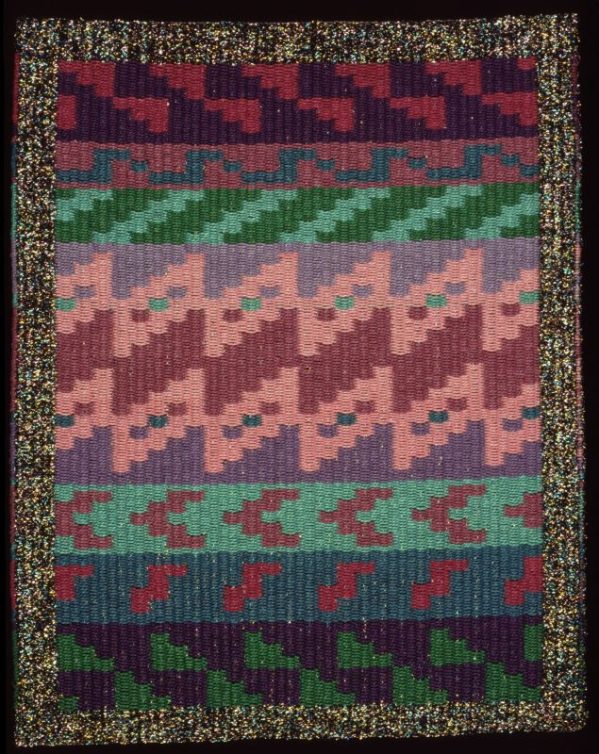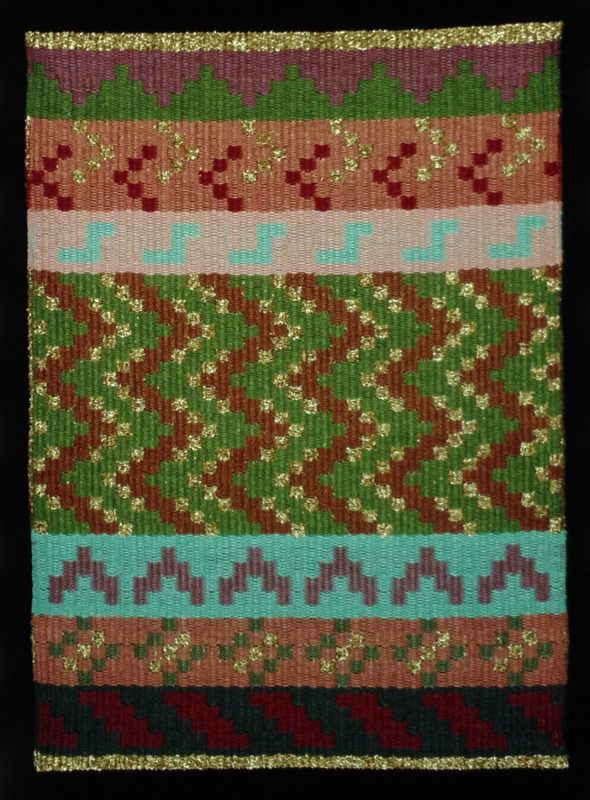This is the third in my series of occasional postings about my earlier days weaving. This blog post was originally published January 2, 2016 on my first blog site, which is no longer in existence.
To review: My focus had been on weaving rugs in Summer and Winter Boundweave on Opposites (Taquete). This is a weft-faced weave of great flexibility using 6 blocks for design, woven on my 8 shaft loom. Each block can be woven independently or combined with other blocks, and up to 4 colors employed, a great advantage for designing.
I had decided to go small. Weaving rugs was just too costly and consumed too much space. My idea was to create small, rug-like pieces in cotton. I would sew them to good quality mat board and exhibit them in metal frames. I chose 5/2 cotton for warp and weft, and this turned out to be a good decision. For my first series I warped 5/2 cotton at 12 ends per inch and 10 inches wide. I figured 30 blocks, 5 repeats of a straight draw profile draft.
Here is a scan of my design for Magic Carpet #1:

My design method was pretty idiosyncratic, yet it worked well for me. I would make designs on the computer, using my (now) antiquated Apple IIe and the weaving software I was using at the time. Each design was from the same straight draw threading profile, but with a different tie-up. I took the designs and tie-ups, cut them into strips, and started arranging them until I liked the result.
Magic Carpet #1 was pretty awkward. I was just starting to see what the possibilities were. Not my finest effort…
Magic Carpet #1

Magic Carpet #2 was better, and the colors worked well. Notice the rather blocky paisleys at the top…
Magic Carpet #2:

Here is the scan of the design for Magic Carpet #3. The design strips don’t show it, but the threading profile shows I used only five blocks for the main design. The sixth block was reserved for a border on the sides. A solid border on top and bottom completed the color frame. I often added color samples on the side for each part of the design.

Magic Carpet #3:
If you squint you can see the “paisleys” in dark and light blue in the second design area from the top :-).

Magic Carpet #4 also has a border all around, this time of metallic yarn that was roughly the same size as 5/2 cotton. I used a lot of metallics as time went on…
Magic Carpet #4:

Black border on the next one.
Magic Carpet #5:

Magic Carpet #6:

Magic Carpet #7 with metallics worked into more of the design and no borders on the sides:

I really loved combining bands of design, working out color combinations, trying to balance both color and movement.
My next series focused on grids. But we’ll do that next time.




